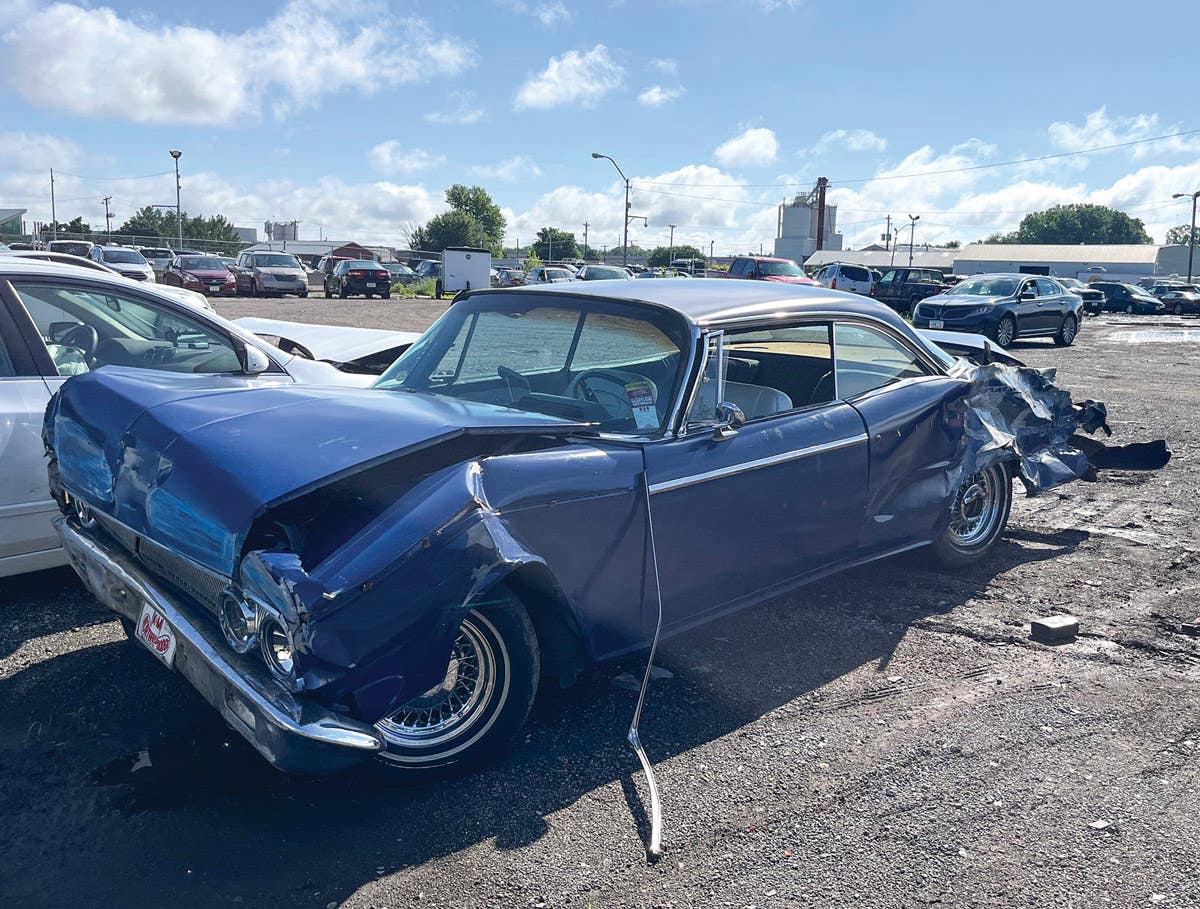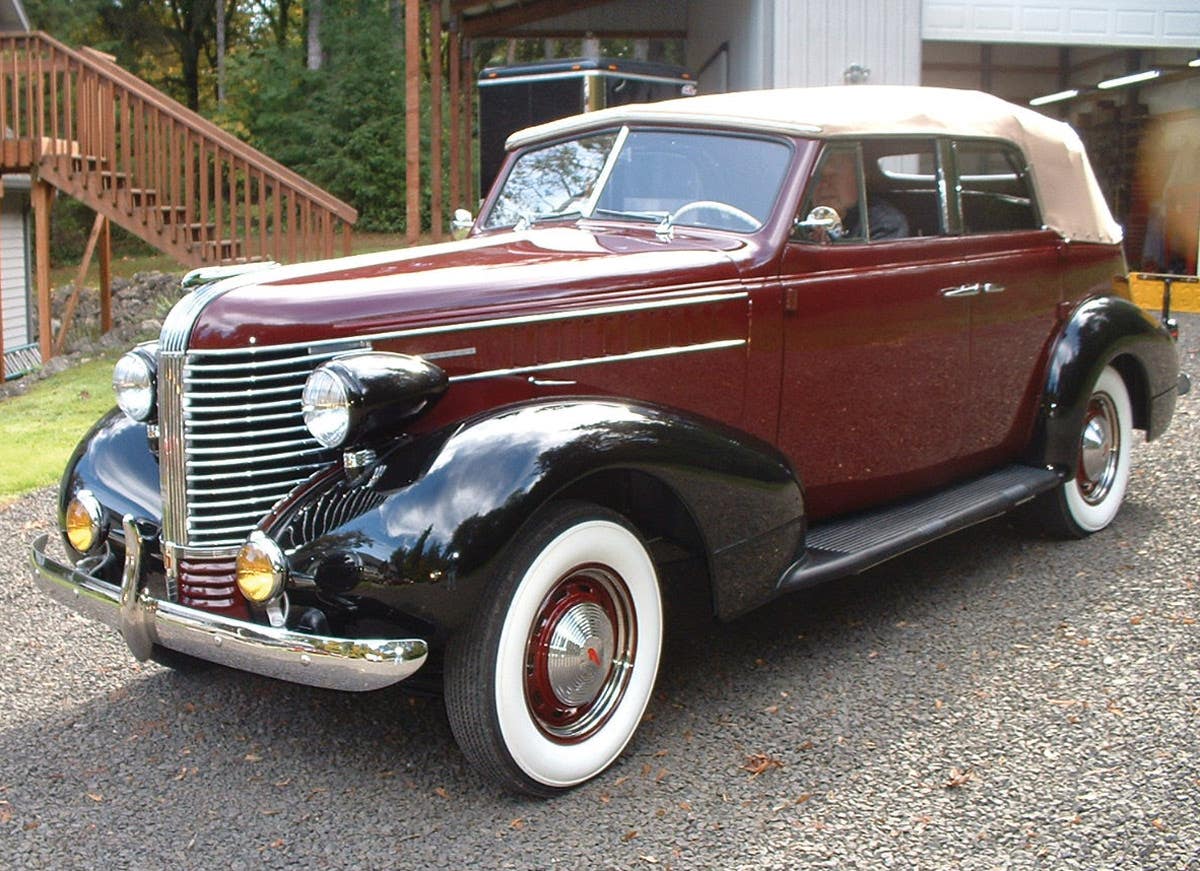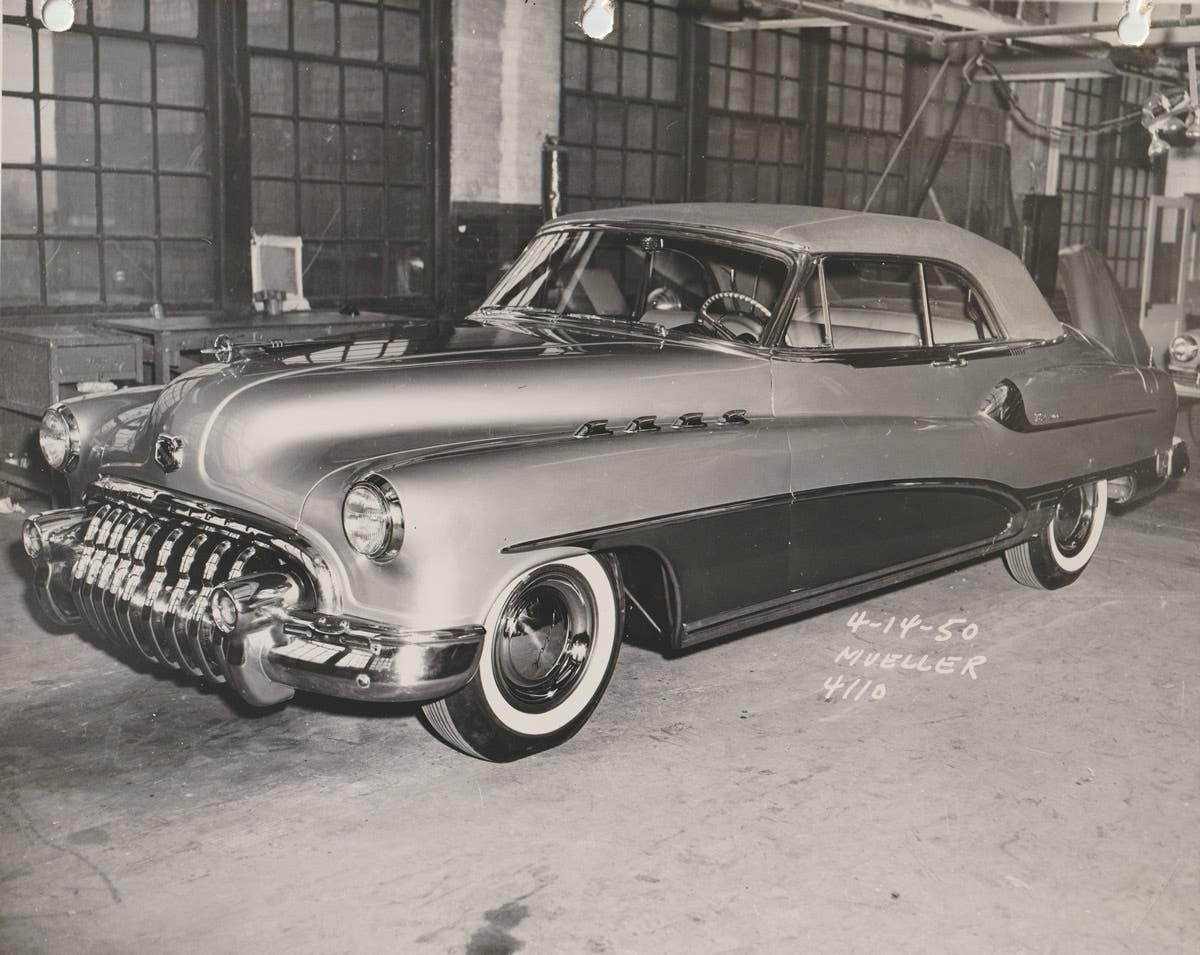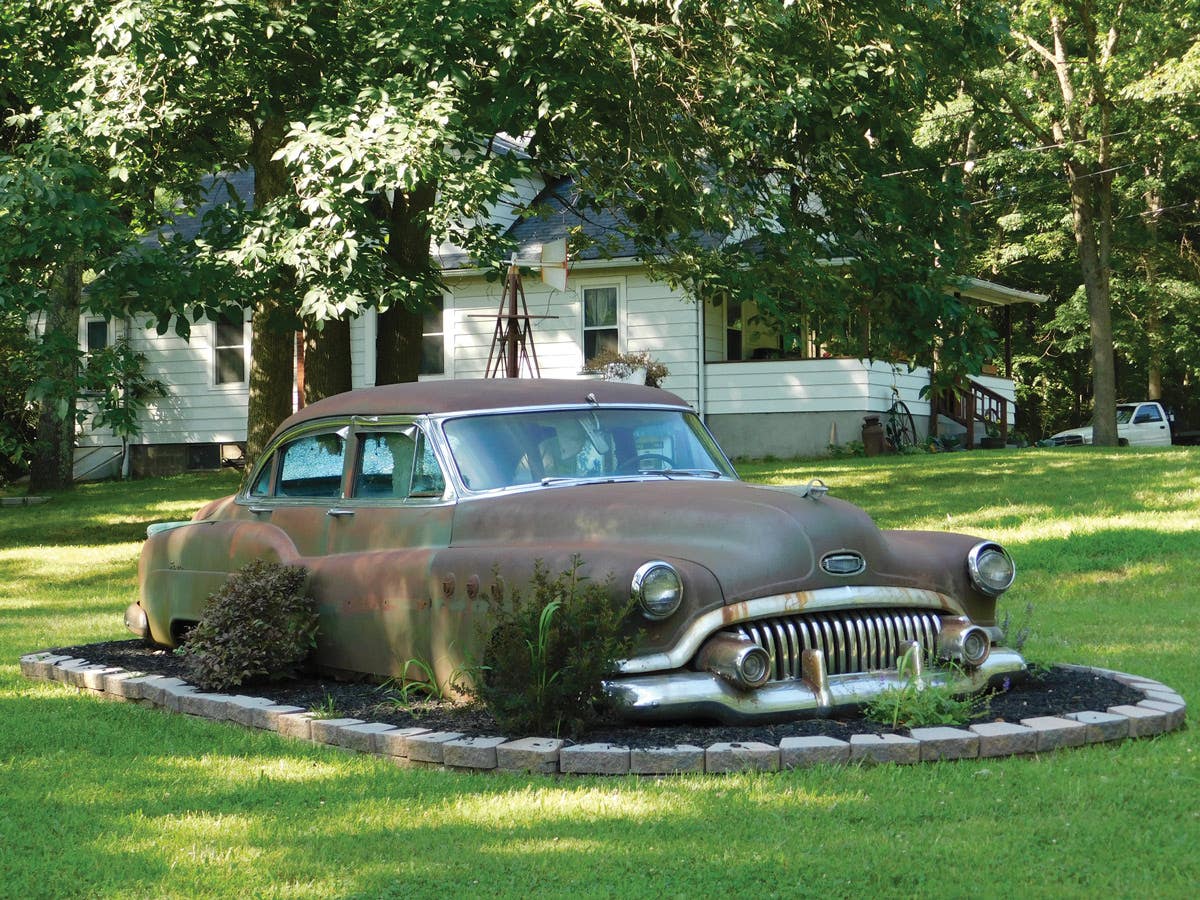Wild burnouts are part of the demonstration quarter-mile runs the
High & Mighty II has performed in recent years.
Photo by Marc Rozman, High & Mighty II Team member
The motive was strictly business when Chrysler’s Plymouth Division marketed its business coupe from 1949-’52. The Deluxe model was built on a 111-inch wheelbase, 7-1/2 inches shorter than the Special Deluxe line, and weighed 200 lbs. less than a Special Deluxe four-door sedan.
With a single seat, short roof and massive trunk compartment, the model continued a line of Chrysler Corp. business coupes dating from 1941. They offered the traveling salesman basic transportation with plenty of room for sample cases and luggage at a bottom-of-the-line 1950 price of $1,371.
In later years, their useful business life at an end, these compact lightweights became attractive candidates for hot rodding and customizing. After all, it was the last “three-window coupe” produced by the American auto industry.
A mild top chop is the big change to this ‘50 business coupe seen
at Minnesota’s Back to the ‘50s show in 1997. Photo by John Lee
The most famous example was the first race car project of Detroit’s Ramchargers, a club whose members were Chrysler Corp. engineers in the late 1950s and early 1960s. At work they were involved in developing the engines that powered Chrysler cars, such as the new generation of B-block wedge V-8s and the modern overhead-valve, inline slant six.
Among Chrysler Engineering’s performance innovations of that time was ram induction, using intake manifold runners of a certain diameter and length to create a wave supercharging effect to “ram” the fuel charge into the cylinders. Applying the same principle to the exhaust headers helped suck exhaust gases out of the cylinders to improve engine breathing.
Spotted at a Pomona, Calif., event in 1997, this 1950 Plymouth
represents the business coupe’s mild custom potential. Along with
factory optional bumper overrider bars, whitewalls and full wheel
discs, this one also sports fender skirts, backup and turn signal
lights, spotlights, a window air conditioner and landau bars on the
roof. Photo by John Lee
Working together both on the job and in the club, the Ramchargers were performing research and development with their hobby.
So it was with the first club car in 1959. The Ramchargers applied some of their ram-induction principles to a 354-cid Chrysler Hemi V-8 (fitted with 392 cid Hemi heads for better breathing). Even though Chrysler had just switched to the wedge design, the Hemi remained the most popular engine for serious drag racers. The powerplant was stuffed into a tired 2,900-lb. 1949 Plymouth business coupe they found.
The result was a wild-looking creation. The Ramchargers’ hand-built ram tube induction setup placed the dual four-barrel carburetors and air intake scoop high above the car’s hood. Tuned exhaust header pipes streaked out of the front wheel openings, and their tips flared out like a trombone section at the head of a marching band.
The engineers were also experimenting with another concept that would become a big factor in competitive drag racing: weight transfer. They raised the compact coupe body and chassis several inches, using Buick coil springs in front and a custom-designed four-link rear suspension. They shortened the frame slightly and moved the body ahead on the frame. The engine was tilted upward in front to give the driveshaft a more direct straight line to the rear axle. Pop the clutch at the drag strip starting line and more of the mass was forced onto the rear wheels to improve traction.
The tall profile that resulted from the car’s chassis modifications prompted the Ramchargers to name it the “High & Mighty.” The High and the Mighty had also been the title of a popular John Wayne movie earlier in the decade. Due to its extensive chassis modifications and power-to-weight ratio, the High & Mighty fell into the National Hot Rod Association. (NHRA) C/Altered class.
The club also “streamlined” the coupe body slightly by chopping the top four inches. The front bumper was left off to lighten the front end. Initially, they left the rear fenders in the garage, too, but later modified them to fit the altered rear wheel placement.
Originally run in gray primer, the Plymouth was painted white in 1960 when Mason’s Plymouth-Valiant of Ferndale, Mich., stepped up to sponsor it.
In two years, the High & Mighty set NHRA class records for top quarter-mile elapsed time (12.62 seconds) and speed (109.75 mph). Its best-ever quarter-mile times were 11.8 seconds and 117 mph.
Having made a mighty impact on the young drag racing sport, the High & Mighty was retired after the 1960 racing season. The highly modified ’49 business coupe was parted out. However, it had helped make the Ramchargers a fixture around the Chrysler corporate campus. The club members were encouraged to develop Dodge drag racing cars and, as the Detroit automakers lifted their ban on racing involvement, the company sponsored their efforts.
Red-and-white candy-striped Super Stock Dodges prepped and driven by the Ramchargers team headlined drag strip events across the country in 1963 and 1964. In subsequent years, the club added factory experimental, funny car and top fuel dragster exploits to their racing credits.
Some 40 years later, a new club, the Chrysler Employee Motorsport Association (CEMA), was been organized, and in 2004, Chrysler executives Bob Lees and Paul Sullins suggested building a tribute car to the Ramchargers.
A 1949 Plymouth business coupe was purchased for $1,200 from a private owner in Wisconsin, and a 392-cid Hemi engine was procured. Over a two-year period, about a dozen CEMA members put in hundreds of hours after work and on weekends and holidays to give birth to the High & Mighty II.
Several original Ramchargers team members contributed original parts that they had saved from the first High & Mighty.
The original “ram tube” intake setup was found, still in use in Florida. It had been modified for fuel injection, but the tribute team restored it for dual carburetion. The wild, trumpet exhaust pipes were re-created from photographic records.
The High & Mighty II made its first run in 2006 and since has made exhibition runs at many drag racing events across the country. High & Mighty II Team member Marc Rozman furnished the accompanying photos. More pictures and video of the vehicle can be seen at the club’s Web site: www.cemaclub.org.
CLICK HERE to tell us what you think in the Old Cars Weekly Forum







